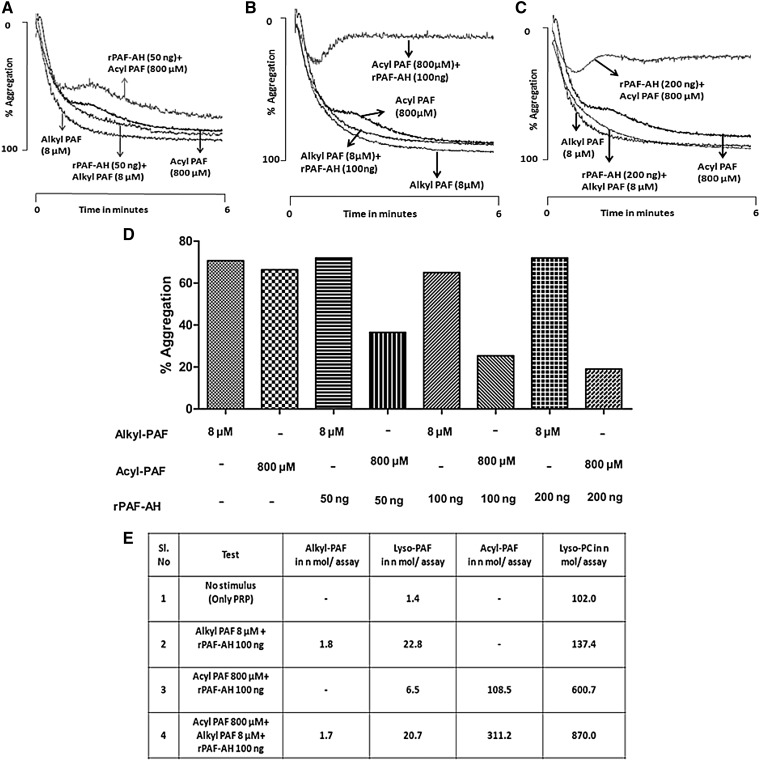Fig. 6.
Preferential hydrolysis of acyl-PAF over alkyl-PAF by rPAF-AH and the quantification of phospholipid substrates and products of rPAF-AH actions with the use of LC-MS. Human PRP (4 × 108 platelets/ml) in a fixed volume of 250 μl was simultaneously stimulated with alkyl-PAF or acyl-PAF at a final concentration of 8 μM and 800 μM, respectively, in the presence of rPAF-AH at three different concentrations, 50 ng (A), 100 ng (B), and 200 ng (C), and monitored for aggregation. Each set of experiments was carried out with the use of platelets from the same donor and then repeated with platelets from at least three different donors, showing similar aggregation traces. In each aggregation panel, alkyl-PAF (8 µM) or acyl-PAF (800 µM) was used to test the sensitivity of platelets. The percentage platelet aggregation is represented in the bar graph from each experiment (D). PRP was stimulated with respective combinations of acyl-PAF (800 µM), alkyl-PAF (8 µM), or both in the presence and absence of rPAF-AH (100 ng per assay). Aggregation was stopped after 3 min, and lipids were extracted and subjected to LC-MS analysis for the presence of acyl-PAF, lyso-PC, lyso-PAF, and alkyl-PAF (E) relative to a d4 PAF standard. All assays were performed with the use of a Chrono-log platelet aggregometer, and traces were recorded with the use of AGROLINK software.

